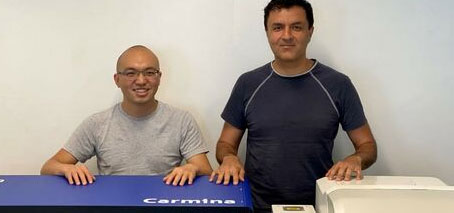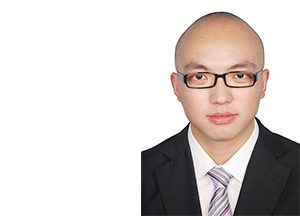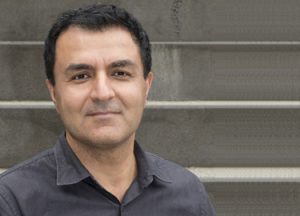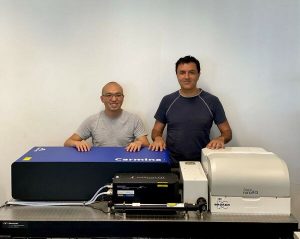Phonon-polaritons in layered crystals have peculiar properties where they occur at the boundary between materials.
In a new study led from UNSW, phonon-polaritons were studied in thin-layer hexagonal boron nitride (hBN) by combined scattering-type scanning near-field optical microscopy (s-SNOM) and Fourier transform infrared (FTIR) spectroscopy.
Polaritons are quasiparticles combining light with an electrical/magnetic particle (such as an exciton).
Phonon-polaritons combine light with a collective excitation of atoms in condensed matter.
Prof Kourosh Kalantar-zadeh’s multidisciplinary group at UNSW combined scattering-SNOM single-wavelength imaging and broadband scattering IR nanospectroscopy to resolve features in near-field amplitude spectra that had never been observed previously.
Such detailed information about influence from local boundaries has enormous implications for engineering and creating nanophotonic heterostructures for advanced sensing applications.
“We were able to see the polariton interferences as a function of location and also signatures from the boundaries into nano-FTIR spectra that have not been observed previously,” says first author Dr Jiong Yang.
This novel work will impact the science of nano spectroscopy, including use of a custom-designed s-SNOM/nano-FTIR with an extraordinarily strong broadband IR source, not previously accessible to researchers.
The study
Boundary Induced Auxiliary Features in Scattering-Type Near-Field Fourier Transform Infrared Spectroscopy was published in ACS Nano (DOI: 10.1021/acsnano.9b08895).
As well as funding by the Australian Research Council (Centres of Excellence and Discovery ECR programs) the authors acknowledge the important contribution of the Melbourne Centre for Nanofabrication (MCN) in the Victorian Node of the Australian National Fabrication Facility (ANFF).
As well as UNSW, contributing authors came from Bruker Nano (California, US), the National Institute for Materials Science (Japan), Monash University (FLEET’s Qingdong Ou and Qiaoliang Bao), and the Institute for Frontier Materials (Deakin University, Australia).
“The capability to see new features in IR spectroscopy was materialised using high laser power and wide spectral range of Bruker nanoIR3-s Broadband,” said Dr Jiong Yang. “Bruker custom-made a unique system for us, to allow this to happen.”
Centre for Advanced Solid and Liquid based Electronics and Optics (CASLEO) & FLEET
Prof Kalantar-zadeh directs CASLEO at UNSW, which seeks novel materials for future benefit to the community, such as liquid metals, sensors, electronic materials, optics, microfluidics, and medical devices.
Within FLEET Prof Kalantar-zadeh develops novel 2D semiconducting materials within Enabling technology A, through theory, synthesis, and characterisation, and develops fabrication techniques necessary for advanced devices, using electron and ion-beam lithography and other tools for Enabling technology B.
FLEET is an Australian Research Council-funded research centre bringing together over a hundred Australian and international experts to develop a new generation of ultra-low energy electronics.
More information
- Contact Prof Kourosh Kalantar-zadeh k.kalantar-zadeh@unsw.edu.au
- Visit Centre for Advanced Solid and Liquid based Electronics and Optics (CASLEO)
- Connect @FLEETCentre
- Watch future solutions to computation energy use




